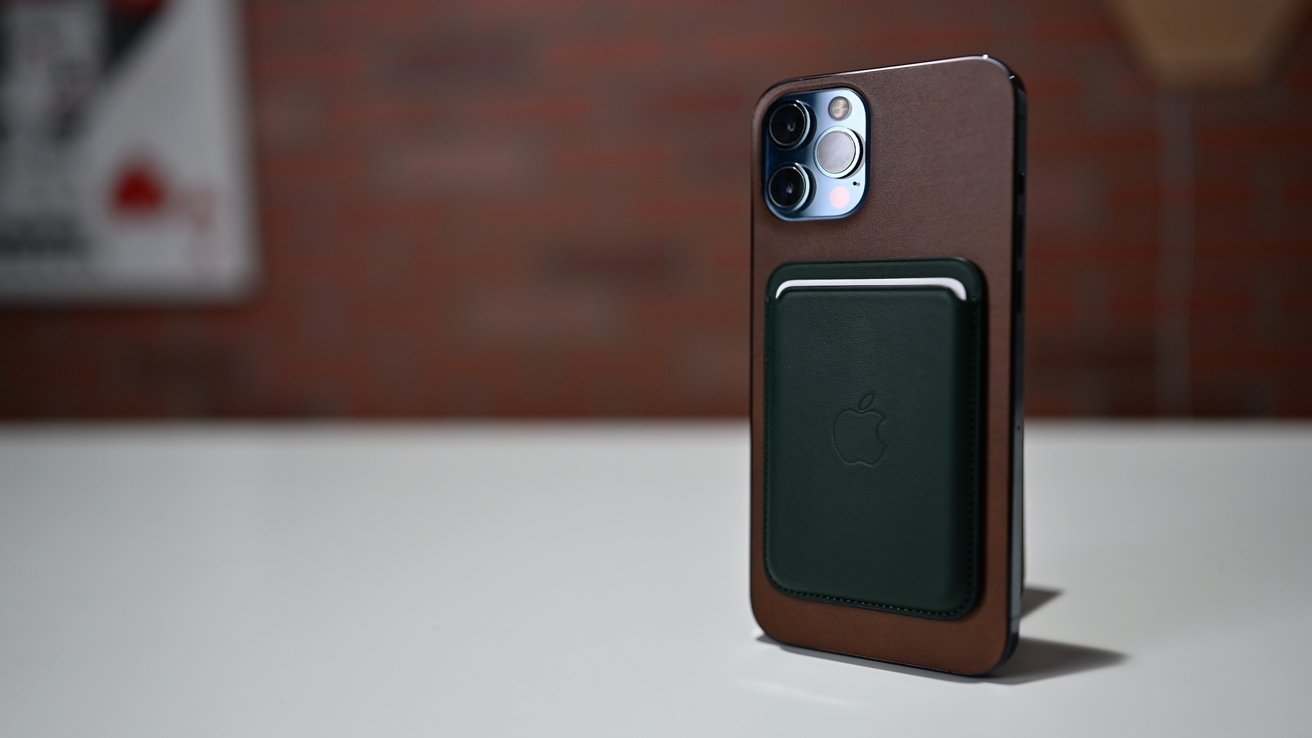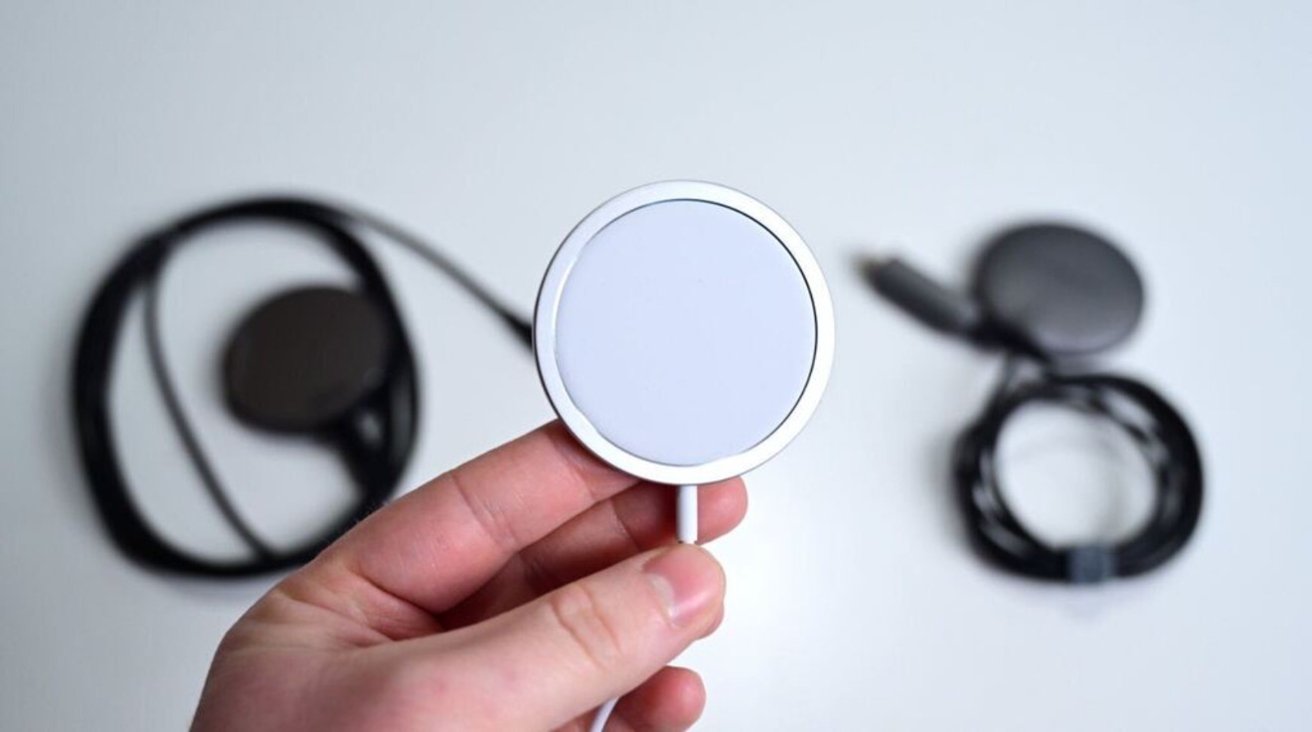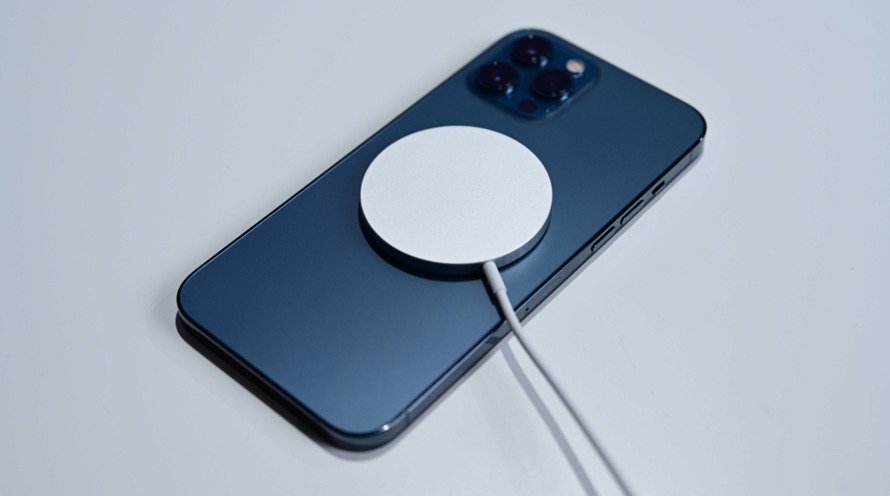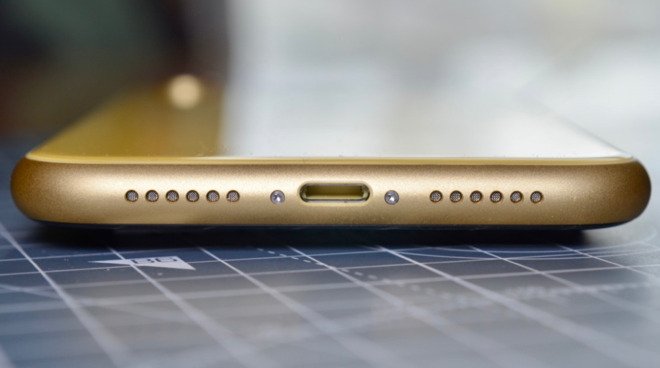An update to the Qi wireless charging standard has been announced, complete with a MagSafe magnet ring. Here's why this is a big deal for both the accessory market and Apple's future iPhone designs.
On Tuesday, the Wireless Power Consortium revealed that an update to Qi, the dominant wireless charging standard used throughout the mobile industry, is on the way. Qi2 (pronounced "Chee-Two" not "Cheeto") will be a replacement for Qi, and one that actually takes after Apple's MagSafe.
For Qi2, WPC member Apple handed over MagSafe as a concept to the organization. This enabled MagSafe to become the "basis" for the new standard.
This isn't a massive stretch for Apple, since MagSafe is effectively Qi wireless charging with a ring of magnets around it. In doing so, Apple is providing the building blocks for a standard that could be used by many other vendors.
The announcement raises many questions and concerns for all stakeholders, including those loyal to Apple and Android alike, as it's an unexpected move. But each will see a lot of the same benefits as the standard gets hammered out and eventually released in devices used by the public.
What exactly has been announced?
According to the WPC announcement, Apple and other WPC members have developed a new "Magnetic Power Profile," which will be "at the core of Qi2." The Magnetic Power Profile will ensure that devices "are perfectly aligned with charging devices, thus providing improved energy efficiency and faster charging."
The short version: Qi but with the MagSafe magnetic ring added to the standard.
Adding the magnetic ring immediately provides Qi devices with many benefits, with the alignment meaning hardware will charge as optimally as possible due to the positioning of charging coils.
WPC directly references this as enabling "faster charging for some devices," but it also could enable "significant future increases in wireless charging speeds that are safe, and energy efficient."
Read as "more than the 15-watt maximum of Qi and MagSafe," though by how much remains to be seen.
According to WPC executive director Paul Struhsaker, "Qi2's perfect alignment improves energy efficiency by reducing the energy loss that can happen when the phone or the charger is not aligned."
The use of magnets also means the mobile devices will stick to the charger and vice versa, so you're not going to disrupt the wireless charging process if you accidentally knock things.
As WPC also says it can open the market to new accessories "that wouldn't be chargeable using current flat surface-to-flat surface devices." Read that as more unique, curved, undulating, or unusual designs that can rely on the magnetic fields to ensure a connection occurs, rather than gravity.
There's also mention of a reduction in e-waste caused by wired charger replacement from cord stress and plug breakage.
As to when the standard will become a reality, it will be formally introduced later this year, and the first mobile phones supporting it will be "available for the 2023 holiday season."
Given the timing of Apple's usual release schedule, and that it's supplying the meat of the standard's changes, this could mean the iPhone 15 generation could include support for it.
Who will support Qi2?
Since Qi is a prevalent technology for wireless charging, an open standard used by many accessory producers and smartphone manufacturers, it's pretty certain that Qi2 will see quick adoption across the industry. With WPC's expectations for devices by the end of the year, there are probably already a lot of firms working on using the standard in their future releases.
The WPC includes 373 companies on its members list, including Apple, LG, OnePlus, Samsung, Sony, and countless other accessory and component producers.
No one has officially confirmed whether or not they will be using Qi2 in their products yet. But it seems probable that all the major players will jump aboard.
What will happen to Qi and MagSafe devices?
WPC intends for Qi2 to replace Qi, and that is to be expected. However, there are an awful lot of existing devices in the world that rely on Qi, and won't see all of the benefits of Qi2.
So far, there's not been any explanation of major differences between Qi and Qi2, other than magnets and possibly higher wattage profiles, nor if they will be interoperable.
It is probably likely that there will be some level of backward compatibility offered by Qi2-supporting hardware. Much like how you could use a Qi charger with a MagSafe-equipped iPhone, or an older Qi model like the iPhone XR with a MagSafe charger, they will work, but you're not going to get the benefits.
You can't magically make that iPhone XR stick to the MagSafe charger and enjoy 15W charging, as the charger will instead work at a lower and safer wattage. Likewise, you can't expect a MagSafe iPhone to pull more wattage from a Qi charger.
If Qi2 offers backward compatibility with MagSafe and Qi, it'll be a fairly similar scenario. That would entail older standard devices being able to get power from new chargers, without necessarily needing magnets to work properly, but still getting enough wattage to work.
Again, a Qi2 device may well work with MagSafe chargers and Qi versions, but it may not necessarily get all of the standard's improvements.
If Qi2 uses a similar-enough pattern of magnets, you could imagine an Android smartphone with Qi2 working well with a MagSafe accessory. Likewise, accessory producers making Qi2 chargers could find their devices working well with MagSafe iPhones as well, increasing their potential customer base.
 With MagSafe-style charging across the entire accessory industry, you could end up using Apple MagSafe Wallets on non-Apple hardware.
With MagSafe-style charging across the entire accessory industry, you could end up using Apple MagSafe Wallets on non-Apple hardware. On that basis, you could imagine Apple's first-party MagSafe accessories also working with Qi2 hardware. Maybe a MagSafe wallet could be attachable to a future Samsung smartphone in a weird moment of hardware cross-pollenation.
Imagine being able to buy an external battery pack with Qi2 and knowing it will attach to the back of your iPhone and work. Let alone the potentially wide market of accessories that could suddenly become usable with the iPhone, the knowledge that what you're going to buy will work with your hardware will be quite reassuring.
However, this is all based on if Qi2 isn't tweaked that much from what MagSafe is currently. If the magnet ring is meddled with, Qi2 hardware may not necessarily play nice with MagSafe accessories and vice versa.
At this stage, we just don't know if that will be the case. But it is nice to dream.
Why did Apple do this?
While it could be a case of Apple wanting to open up the accessories market for its users, as well as to sell its own to owners of other devices, there may be other reasons for this decision.
It could be altruistic in part, since the benefits of MagSafe being spread across the marketplace could be useful to most device owners, beyond Apple's customers.
Despite Apple's reputation for coming up with different device connections and standards for its own products, it does sometimes allow its creations reach other platforms.
Take Thunderbolt for example, which Apple worked on with Intel before heavily adopting it for its Mac products and leaving Intel to manage it. With Intel's contribution of Thunderbolt 3 to the USB Implementer's Forum, USB 4 now offers the benefits of Thunderbolt 3, as well as backward compatibility.
It wouldn't be unreasonable to think that Apple had a word on what happened to Thunderbolt 3 at the time.
There's also the idea that Apple may not necessarily want to deal with the problem of an accessory market of Qi-compatible chargers that have a magnetic capability to connect like MagSafe, but not an officially-sanctioned MFi version.
Since it cannot control whether a vendor adds a magnetic array that happens to match MagSafe to a Qi-compliant charger, providing the skeleton to WPC would at least mean there's some level of homogeneity to the market.
What about port-less iPhone designs?
One byproduct of working with the industry on a charging standard is that it gives Apple a way to go down one design route that has been rumored about for a while. It could give Apple a license to produce an iPhone without a port.
The Lightning port is constantly being rumored as being replaced by a USB-C version, in part due to EU regulations demanding the use of a common charging standard across the entire industry.
However, if it has a hand in the development of future Qi2 standards, Apple could move to rely more on wireless charging, and nudge users in that direction too.
With less of a need to use Lightning or USB-C for power, that leaves the need for a physical connection for restoration and other data-related tasks. It's safe to suggest that Wi-Fi, Bluetooth, and Apple's various wireless communication features could handle most reasons for shifting data on and off an iPhone.
There have also been reports that Apple wanted to work on new recovery modes to allow for a reinstallation of iOS on an unresponsive iPhone, without requiring a physical connection.
If Apple manages to eliminate the remaining reasons for physical connectivity, it has the opportunity to simply dispose of having a port completely.
Indeed, doing so would be beneficial for Apple in a few ways. For a start, it would be complying with EU regulations by using a common wireless charging standard.
Removing a port also eliminates a component from production, as well as freeing up a tiny bit more space inside the densely-packed iPhone. Then there's water resistance to consider since a port-less iPhone wouldn't need to include protections for a port that is no longer there.
It's certainly an opportunity for Apple to consider down the road, but it all depends on how Qi2 is implemented, and if the market at large goes along with the plan.
 Malcolm Owen
Malcolm Owen









-m.jpg)






 Brian Patterson
Brian Patterson
 Charles Martin
Charles Martin



 William Gallagher
William Gallagher
 Christine McKee
Christine McKee
 Marko Zivkovic
Marko Zivkovic









7 Comments
Maybe we'll finally get the accessory makers to get w/ the program and leverage what has been known as MagSafe, rather than Qi + magnets.
I intend to pronounce it "cheeto" and their ain't squat god or man can do about it
When will we see a wireless charger that works with the Apple Watch too?
Really the “why” is pretty obvious - the EU ruling about a common charging standard. It means Apple have to adopt USB-C *unless* there’s another common charging standard they can apply. Enter QI2, a common charging standard that’s effectively already built into all their iPhones.